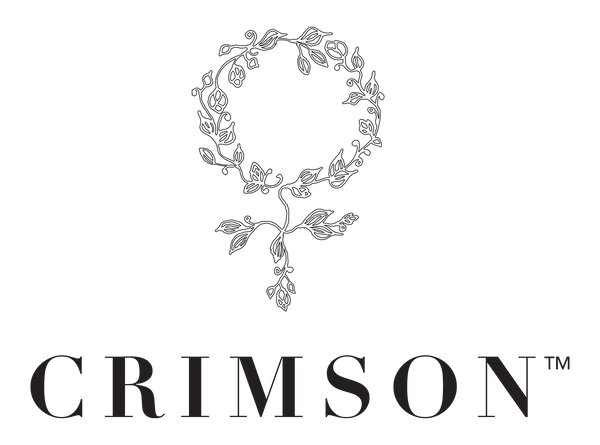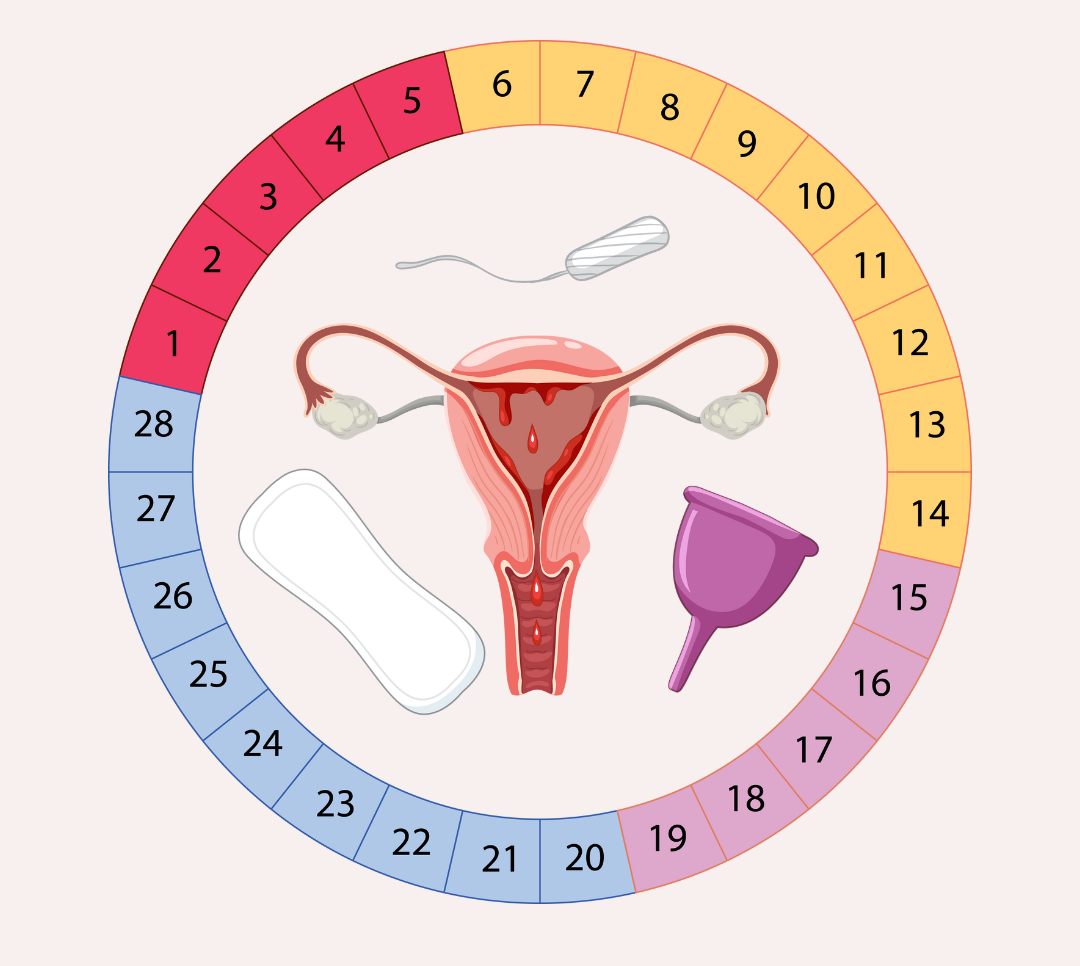
What to Expect at Different Stages of Your Menstrual Cycle
Share
Understanding your menstrual cycle is about so much more than just knowing when your period will show up. Think of it as your body’s monthly rhythm—a predictable pattern of hormonal shifts that influences everything from your energy levels and mood to your skin and appetite.
This friendly guide will break down the four distinct phases of your cycle, empowering you to understand and work with your body’s natural flow, not against it.
Your Guide to Navigating Your Menstrual Cycle
Your menstrual cycle is a sophisticated and completely natural process your body goes through each month to prepare for a potential pregnancy. While we often just call it "that time of the month," it's actually a continuous loop involving four key stages: the menstrual, follicular, ovulatory, and luteal phases. This whole show is orchestrated by a delicate dance of hormones, primarily oestrogen and progesterone.
A typical cycle can last anywhere from 21 to 35 days, and it’s totally normal for your personal rhythm to vary. Things like stress, travel, or even big changes in your diet can nudge its timing from one month to the next.
To help you get a quick overview, here’s a simple table breaking down the four main stages.
Your Menstrual Cycle at a Glance
| Stage | Typical Day Range | Key Hormones | What's Happening |
|---|---|---|---|
| Menstrual | Days 1-5 (approx.) | Oestrogen & Progesterone are low | The uterine lining is shed (your period). |
| Follicular | Days 1-13 (approx.) | Oestrogen rises | Your body prepares to release an egg. |
| Ovulatory | Day 14 (approx.) | Oestrogen peaks, LH surges | A mature egg is released from an ovary. |
| Luteal | Days 15-28 (approx.) | Progesterone rises | The body prepares for a potential pregnancy. |
Getting to know each of these stages helps you anticipate changes in your physical and emotional wellbeing, so you can plan your schedule, adjust your self-care, and feel more in control.
Understanding the Four Key Phases
Let's dive a little deeper into what each phase means for you. We'll explore:
- The Menstrual Phase: The start of your period, when the uterine lining sheds.
- The Follicular Phase: A time of rebuilding and rising energy after your period ends.
- The Ovulatory Phase: The short, fertile window when an egg is released.
- The Luteal Phase: The final stretch, leading up to your next period.
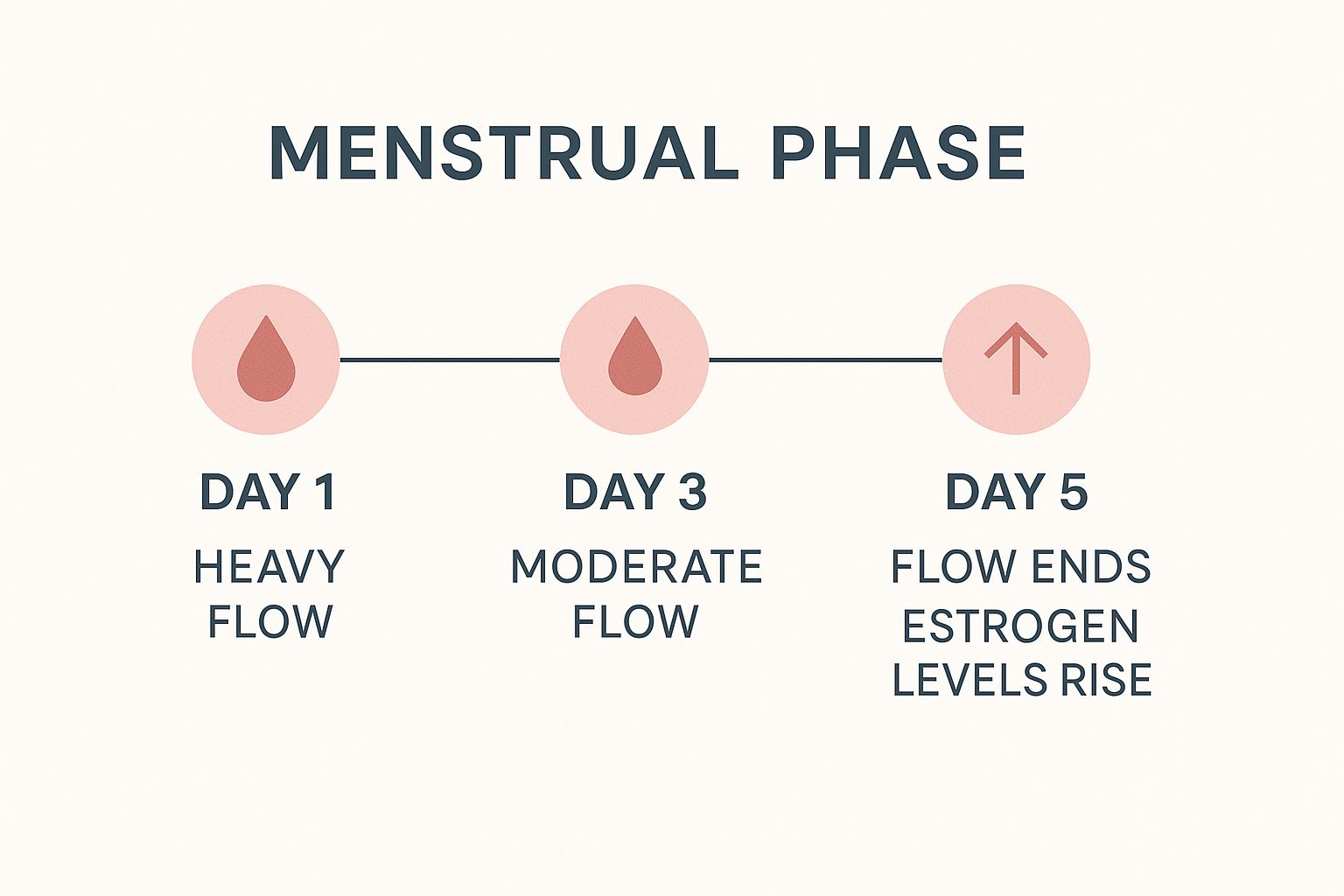
As you can see, your period isn't static. It evolves over several days, marking the beginning of a new cycle and setting the stage for everything that comes next.
The Menstrual Phase: Shedding and Renewal
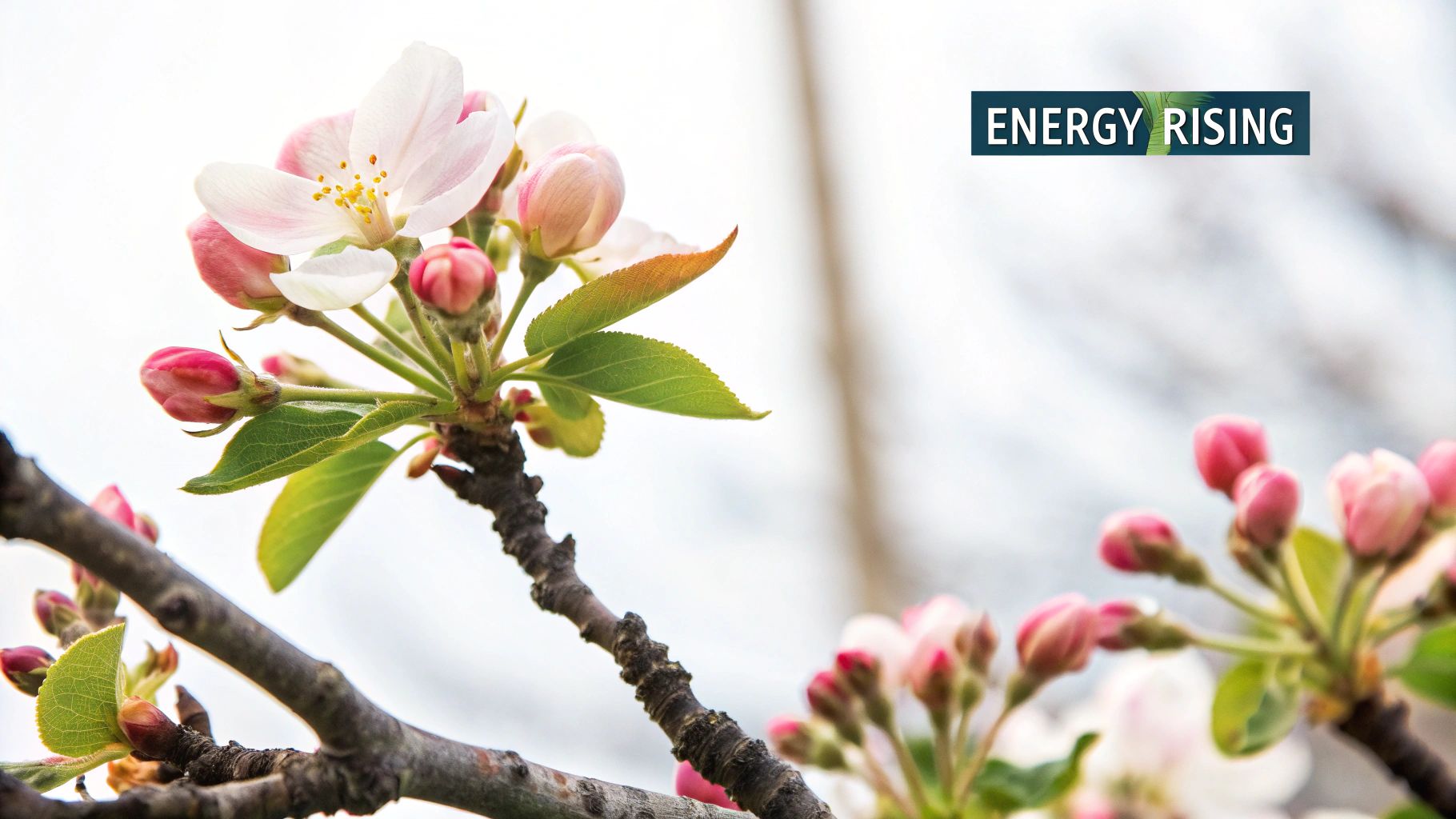
Day one of your period marks the official start of your cycle and the beginning of the menstrual phase. This stage is all about shedding and renewal. Your body is releasing the uterine lining it carefully built up in the last cycle, simply because pregnancy didn't happen this time around.
What kicks this all off? A sudden drop in your two key hormones: oestrogen and progesterone. You can think of them as the team that sets up the nursery for a potential pregnancy. When they get the signal that their services aren’t needed, they pack up and go, which tells your uterus it's time to let go of its lining.
Navigating Common Symptoms
That dramatic hormonal dip is exactly why so many of us feel a particular way during our period. It’s not just in your head—there are very real biological reasons behind the classic symptoms.
Common experiences during the menstrual phase include:
- Cramps: These are caused by your uterus contracting to help shed its lining.
- Fatigue: With hormone levels at their lowest, it’s completely normal to feel drained and like you need more rest.
- Lower Moods: The hormonal shift can also mess with the neurotransmitters in your brain, sometimes leading to feelings of sadness, brain fog, or irritability.
This is a time to be incredibly gentle with yourself. Your body is doing a lot of work behind the scenes, and a little extra self-care can go a long way. Think a warm heat pack on your belly, gentle movement like a slow walk or stretching, and nourishing, iron-rich foods to help replenish your body.
Understanding Period Pain
While some discomfort is normal, debilitating pain is not. It's something we need to talk more about. Here in Aotearoa New Zealand, pelvic pain is a significant issue. Some studies estimate that around 25% of females report some form of pelvic pain connected to their cycle. It has a real impact, too; research shows that about 27% of Kiwi school students sometimes or always miss school because of their period. You can read more about the impact of menstrual symptoms in New Zealand in recent studies.
If your pain is severe, doesn't get better with over-the-counter medication, or makes you regularly miss out on life, it’s time to chat with a healthcare professional. They can help figure out what’s going on and find a solution that actually works for you.
Finding Reliable Protection
Having period care you can truly trust is a non-negotiable for getting through your day with confidence. For many, digital tampons—the kind without a plastic applicator—are a discreet and reliable choice. Because you guide them into place with your finger, you get more precise placement and create less waste.
Crimson Organic tampons are made from 100% certified organic cotton, meaning they’re completely free from harsh chemicals, pesticides, and fragrances. This makes them a much gentler choice for your body, helping you feel secure and comfortable as you move through this phase of rest and release, preparing for the new energy of the next stage.
The Follicular Phase: Rebuilding and Energising
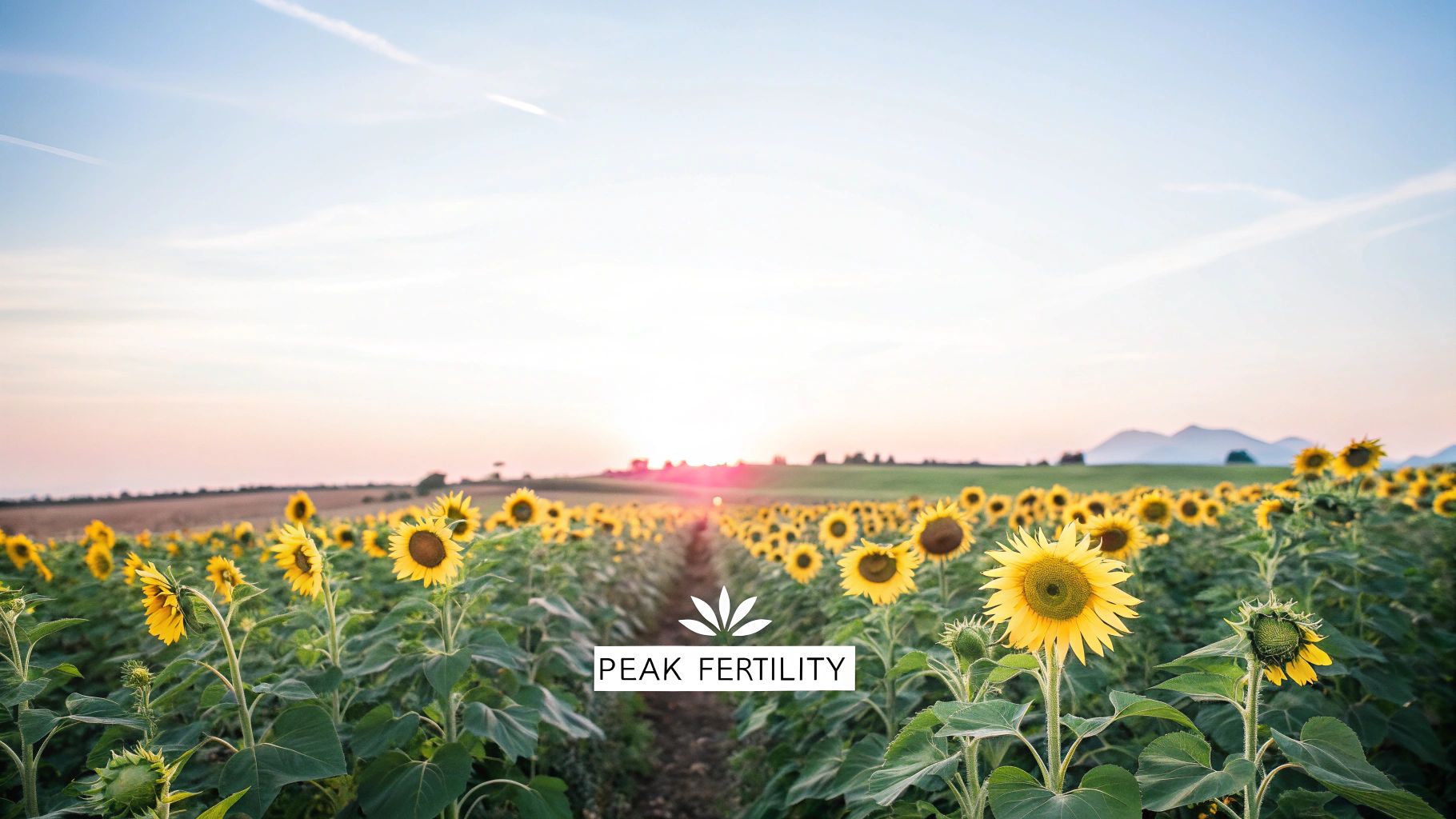
Once your period winds down, your body shifts into a vibrant phase of rebuilding and growth. This is the follicular phase. While it technically starts on day one of your period, it really comes into its own once the bleeding stops.
Think of it as your body's springtime—a fresh start after the release of the menstrual phase.
This stage is all about preparation for what's to come. Your pituitary gland sends out a key messenger called Follicle Stimulating Hormone (FSH). This hormone's job is to signal your ovaries that it's time to start maturing several tiny sacs, called follicles, each holding an immature egg.
Riding That Wave of Renewed Energy
As these follicles grow, they start producing oestrogen. It's this steady rise in oestrogen that makes the follicular phase feel so good for many of us. You'll likely notice a welcome boost in energy, a brighter mood, and a feeling of real mental clarity.
This is a fantastic time to:
- Tackle big projects: Your focus and motivation are often at their peak.
- Get social: You might feel more outgoing and ready to connect with friends.
- Try a new workout: With more physical energy, it’s a great opportunity to challenge your body.
Many people also notice their skin looking its absolute best during this phase. That increase in oestrogen can boost collagen and hydration, giving you that lovely "follicular glow." It’s one of the clearest physical signs of what to expect at different stages of your cycle.
This phase is your body’s natural momentum at its finest. It's an invitation to lean into that feeling of renewal, set intentions for the month ahead, and make the most of your elevated energy levels.
Listening To Your Body’s Cues
While this phase is generally marked by positive feelings, it’s still important to tune in to what your body needs. The follicular phase is a journey, not a single event; your energy will gradually build as you get closer to ovulation.
For a deeper look into how each stage connects, you can learn more by understanding the 4 phases of your menstrual cycle in our detailed guide.
This is a time for proactive self-care. Nourish your body with wholesome foods to support the rebuilding process and enjoy the mental and physical vitality that comes with it. As your oestrogen continues to rise, it sets the stage for the next exciting event in your cycle—ovulation.
The Ovulatory Phase: Your Fertile Window

Welcome to the main event of your cycle—the ovulatory phase. While it’s the shortest stage of them all, typically lasting just 24 to 48 hours, it’s a powerful and pivotal moment. This is your body’s fertile window, when a mature egg is finally released from the ovary, ready for its journey.
The whole thing is kicked off by a dramatic hormonal shift. Right as oestrogen hits its peak, it sends a signal to your pituitary gland to release a surge of another key player: Luteinising Hormone (LH). This LH surge is the final push the dominant follicle needs to rupture and set its egg free into the fallopian tube.
Signs You Might Be Ovulating
Your body often drops subtle hints that ovulation is happening. Learning to recognise these clues is a fantastic way to connect more deeply with your body's unique rhythm and understand what's going on inside.
Some common physical signs to look out for include:
- Changes in Cervical Mucus: You might notice your cervical mucus becomes clearer, more slippery, and stretchy—often compared to the consistency of raw egg whites. This clever change is designed to help sperm travel more easily.
- A Rise in Basal Body Temperature: Your resting body temperature often takes a slight but measurable dip right before ovulation, followed by a sharp increase right after it occurs.
- Mild Cramping: Some people feel a brief, one-sided ache in their lower abdomen. It's often called "mittelschmerz," which is German for "middle pain," because it happens around the middle of your cycle.
Celebrating Your Peak Energy
It’s no coincidence that many of us feel our absolute best during this phase. That peak in oestrogen, along with a little testosterone boost, often brings a surge in energy, confidence, and libido. It’s your body's biological way of encouraging reproduction during your most fertile time.
You might feel more sociable, creative, and physically strong. This is a brilliant time to channel that vibrant energy into projects you're passionate about, connect with loved ones, or simply enjoy feeling confident and radiant in your own skin.
Self-care during ovulation is all about celebrating this peak. Enjoy the high energy, but don’t feel pressured to do it all. Listen to what your body wants and embrace the confidence that often comes with this dynamic, short-lived stage. This peak sets the scene for the final phase of your cycle, where your body begins to wind down.
The Luteal Phase: Preparing and Winding Down
After the bright, high-energy vibes of ovulation, your body shifts gears and enters its final stage: the luteal phase. Think of it as the winding-down period. It’s when your body diligently prepares for a potential pregnancy, and it lasts from ovulation right up until your next period begins.
This phase gets its name from the corpus luteum, which is just a fancy Latin term for "yellow body." It's what's left of the follicle after it releases an egg. This little structure becomes a temporary hormonal powerhouse, and its main job is to pump out progesterone.
Progesterone is the absolute star of the show during this time. Its whole purpose is to make the uterine lining thick, spongy, and rich with nutrients—basically, creating the perfect cosy environment for a fertilised egg to implant and grow.
Navigating PMS and Self-Care
While progesterone is busy getting your uterus ready, this hormonal shift is also responsible for what we all know as premenstrual syndrome (PMS). As progesterone rises and oestrogen takes a nosedive, it can have a real impact on your mood, energy levels, and how you feel physically.
If you start noticing things like mood swings, bloating, breast tenderness, or a sudden, intense craving for chocolate, you are definitely not alone. It’s an incredibly common experience, all thanks to the complex hormonal dance happening inside you.
A New Zealand survey really highlighted this, finding that 72.5% of young women reported mood changes tied to their periods, while a huge 89% experienced menstrual cramps. These numbers just confirm that the physical and emotional shifts during this phase are a shared reality for so many of us. You can read more about the research on these symptoms among New Zealanders here.
This is a crucial time for self-compassion. Your body is working incredibly hard, and giving it a bit of extra care can make all the difference in how you feel.
Practical Tips for the Luteal Phase
Instead of trying to fight against your body, this phase is an invitation to listen and respond gently. Small adjustments to your routine can help ease discomfort and support your wellbeing.
- Nourish Your Body: Focus on foods rich in magnesium, like dark leafy greens, nuts, and seeds, which can help ease cramps. Complex carbs from whole grains can also help stabilise your mood and energy.
- Prioritise Rest: You might feel more tired than usual, and that’s a clear signal to slow down. Getting enough sleep and allowing for moments of rest helps your body manage the hormonal rollercoaster.
- Move Gently: While you might not feel like smashing a high-intensity workout, gentle movement like walking, stretching, or yoga can be amazing for boosting your mood and relieving tension.
- Stay Prepared: Knowing your period is just around the corner is half the battle. Having your preferred period care, like Crimson Organic’s non-applicator digital tampons, ready to go can remove a layer of stress and help you feel prepared and in control.
Proper hygiene is also key during this time, and you can explore more about why vaginal health is so important during your period in our dedicated article. By honouring this phase of preparation and rest, you can move into your next cycle feeling more supported and in tune with your body's natural rhythm.
Championing Period Equity in New Zealand
Understanding your cycle is one thing. Being able to manage your period with dignity? That’s something else entirely. It requires access to products and education, and that’s where the conversation shifts from a personal wellness journey to a community-wide issue: period equity.
Here in Aotearoa New Zealand, period equity means that everyone who menstruates can get the period care products and information they need, no matter their income or where they live.
When that access is missing, the ripple effects are huge, especially for young people. It can knock their confidence, harm their wellbeing, and even stop them from going to school and just being kids.
The Impact on Young People
The need for period equity kicks in much earlier than most of us think. The average age for a first period in New Zealand is around 13, but get this—national health data shows nearly 50% of girls start menstruating before they even hit secondary school.
That means thousands are navigating their first period during their intermediate years, shattering the old assumption that this is purely a high school experience. You can learn more about these findings on first menstruation in New Zealand and what it means for education.
When a student can't afford or find products like tampons or pads, they often have to miss class. That’s not a choice; it’s a necessity. And it creates an educational gap that can have lasting consequences.
At Crimson Organic, our mission has always been about more than just providing premium organic period care. We're deeply committed to being part of the solution to period poverty right here in our own communities.
It’s why giving back is baked into the heart of everything we do. Through our ‘Donate a Box’ programme and other partnerships, we work with incredible organisations to get our products into the hands of those who need them most.
We believe the choices we make can create a ripple effect of good. Choosing Crimson isn't just about caring for your own body with safe, organic products—it’s about helping to ensure another person can manage their period with the dignity and confidence they absolutely deserve.
Common Questions About the Menstrual Cycle
Navigating your cycle can bring up plenty of questions, and that's completely normal. The more you understand your body’s unique rhythm, the more empowered you’ll feel. Here are some clear, simple answers to a few common queries we hear all the time.
Is It Normal for My Cycle Length to Vary?
Yes, it’s incredibly common for your cycle length to change from month to month.
While we often hear about the "textbook" 28-day cycle, a healthy, regular cycle can be anywhere from 21 to 35 days long. Factors like stress, travel, intense exercise, or changes in your diet can all influence your hormones and cause your period to arrive a little earlier or later.
Tracking your cycle is a great way to start noticing your personal patterns and feel more prepared for whatever comes your way.
What Are Digital Tampons and How Do I Use Them?
"Digital" tampons are simply tampons that you insert with your finger (your digit) instead of a plastic or cardboard applicator. This makes them a fantastic eco-friendly choice with much less packaging waste.
To use one, just wash your hands, unwrap the tampon, and give the string a little tug to make sure it's secure. Then, find a comfortable position—like squatting or putting one leg up on the toilet—and gently guide it into place.
Crimson Organic tampons are made from 100% certified organic cotton, so you can feel good about what you're putting in your body.
How Do I Know if My Period Pain Is Normal?
Mild to moderate cramps are a very common part of menstruation and can often be managed with a heat pack or some gentle pain relief. However, pain so severe that it makes you miss school, work, or social events is a sign that you should speak to a doctor.
If your pain doesn’t improve with standard medication, seems to be getting worse over time, or is accompanied by very heavy bleeding, it’s worth investigating. Debilitating pain isn't something you just have to put up with.
For more insight, you can explore some of the common causes of heavy menstrual flow in our detailed guide.
At Crimson Organic, we're committed to providing you with premium, certified organic period care that supports your body and our planet. Explore our range of gentle, effective products today at https://crimsonorganic.co.nz.
